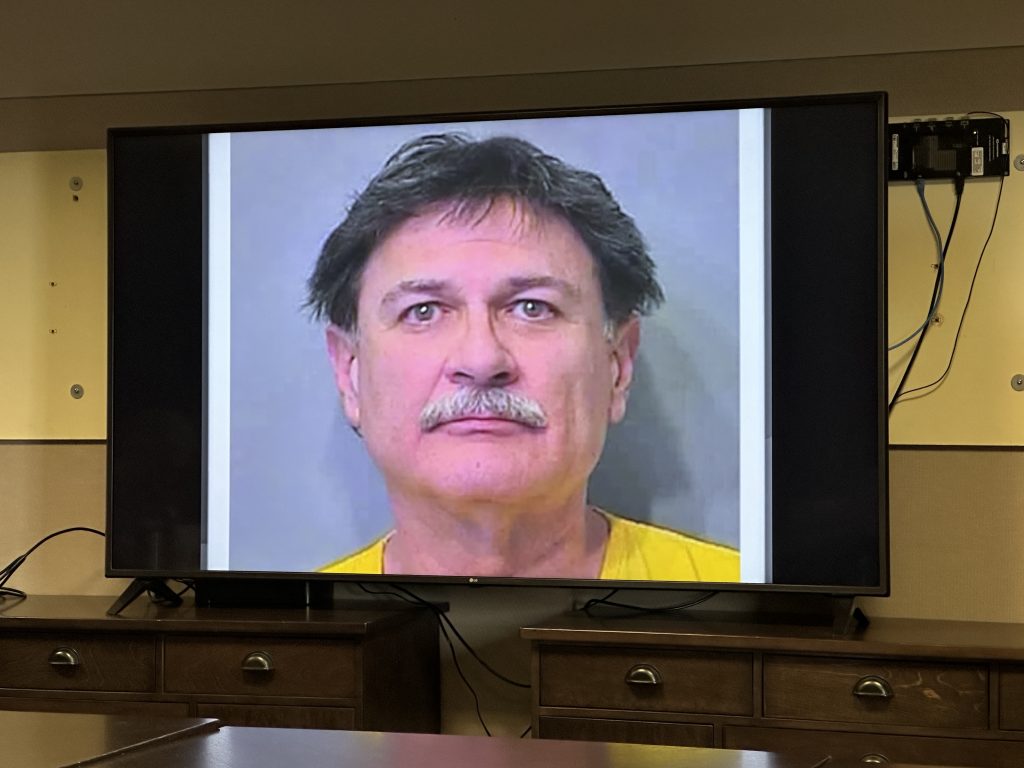DNA evidence links 4 Calgary murders from 1970s to dead serial killer
Posted May 17, 2024 11:04 am.
Last Updated May 17, 2024 9:44 pm.
A convicted sexual offender with an extensive criminal history in Canada and the U.S. spanning several decades is responsible for the deaths of two young women and two girls in Calgary in the 1970s, according to police.
Alberta RCMP say Gary Allen Srery, who died in an Idaho prison in 2011, was a serial killer who was identified using advancements in DNA technology more than 45 years after the murders.
Police say the American killed Eva Dvorak and Patricia McQueen, both aged 14, Melissa Rehorek, 20, and 19-year-old Barbara MacLean in 1976-77.
Their murders went unsolved until a 2022 tip prompted a review of the historical files. That led police to a suspect hypothesis in 2023, and the creation of a family tree using DNA from distant family members on ancestry websites — a police technique known as investigative genetic genealogy.
READ MORE: Timeline of how police tracked down Calgary serial killer
The U.S.-born Srery, a serial sexual offender who fled to Canada in the mid-1970s, lived in Alberta and British Columbia until the late 1990s. He was deported to the U.S. in 2003.
Srery, who police say used multiple aliases over the years, was serving a life sentence for sexual assault when he died of natural causes in prison.
Police believe Srery could be responsible for several more homicides and rapes across Canada and the U.S. They are looking for more information about his whereabouts between 1974 and 1978, when his movements are less known to authorities.
Calgary police say they have looked into 114 unsolved homicides, but don’t believe Srery is linked to any of them.
Anyone with information can call the Alberta RCMP’s historical homicide unit at 780-509-3306 or email k-ideology@rcmp-grc.gc.ca.

READ MORE: Victims’ families react after serial killer linked to historical Calgary murders
The four victims
Alberta RCMP detailed the similarities between the four young women’s deaths at a Thursday news conference at K Division Headquarters in Edmonton.
Dvorak, McQueen, Rehorek and MacLean were all described as young, vulnerable victims who were last seen in Calgary and out walking during the evening or night. They all died of asphyxiation and were left outside city limits, with no attempts to conceal their remains. Their bodies were found fully clothed with traces of semen, which could not be identified at the time of the crimes because the proper technology did not exist to create a DNA profile.
Dvorak and McQueen were last seen on Feb. 15, 1976, around midnight, walking near 9 Avenue and 12Street SE. Their bodies were found 11 hours later on the road under the Happy Valley underpass, west of the city. Their deaths were initially classified as “sudden” and suspicious, but not homicides.

Rehorek, who had recently moved to Calgary from Windsor, was last seen by roommates at the YWCA downtown, where she lived, on Sept. 15, 1976. The young woman, who worked as a housekeeper at a hotel, had made plans to hitchhike out of town for her two days off work. Her body was found that morning at 10:50 a.m. in a ditch off a gravel road west of Calgary – what’s now known as Township Road 252. Police say there was evidence of a struggle and that she was punched in the head.

MacLean worked at a bank in Calgary after moving from Nova Scotia in September 1976. Five months later, on Feb. 25, 1977, she was last seen walking alone from the Highlander bar on 16th Avenue, where she had been out with friends. Her body was found just after 8 a.m. at 6 Street and 80 Avenue – just outside city limits. Police believe there was a struggle prior to her death as her left fingertips were injured, and she had marks, bruises and scrapes.

Police say the parents of all four victims have since passed away, but siblings and other living relatives have been updated.
Advancements in DNA technology
Alberta RCMP say police never stopped investigating the four deaths over the years. Four task forces were created in the 1990s, and technological advancements were applied in the 2000s. Police say a total of 853 suspects or persons of interests, and 1,490 vehicles were identified and investigated.
In 2003, DNA tests confirmed MacLean and Rehorek were killed by the same person. That DNA was tested again in 2006 and 2012 – comparing it to other suspects and through Interpol. There was no match.
In 2022, exhibits from Dvorak and McQueen’s deaths were resubmitted to the lab. The following year, police matched that DNA to the MacLean and Rehorek murders – linking all four women for the first time.
That led police to develop a DNA profile. The likely source, they determined, was Srery – a discovery that sparked a cross-border investigation.

Police outlined a life of crime for Srery from a young age.
He was convicted of rape and kidnapping in Los Angeles in the late 1960s before later fleeing to Canada. He lived in Calgary and Standard, Alta., from 1976 to 1978, with a brief return to California. Police say he managed to secure an illegal licence and social assistance while in Alberta.
He then moved to B.C. in 1979, where he was at one point employed by BC Ferries. He moved around a lot, from Vancouver (1979-80) to Half Moon Bay (1981-83), Gibsons (1983-88), Abbotsford (1988-90), Cultus Lake (1990-96), and Chilliwack (1996-98).
He was convicted of sexual assault in New Westminster, B.C., in 1996.
Alberta RCMP say Srery has used more than dozen aliases over the years such as Michael James Costello, David Blackwell, Willy (William) Blackman, Rex Edward Long, and Gary Delorme.









